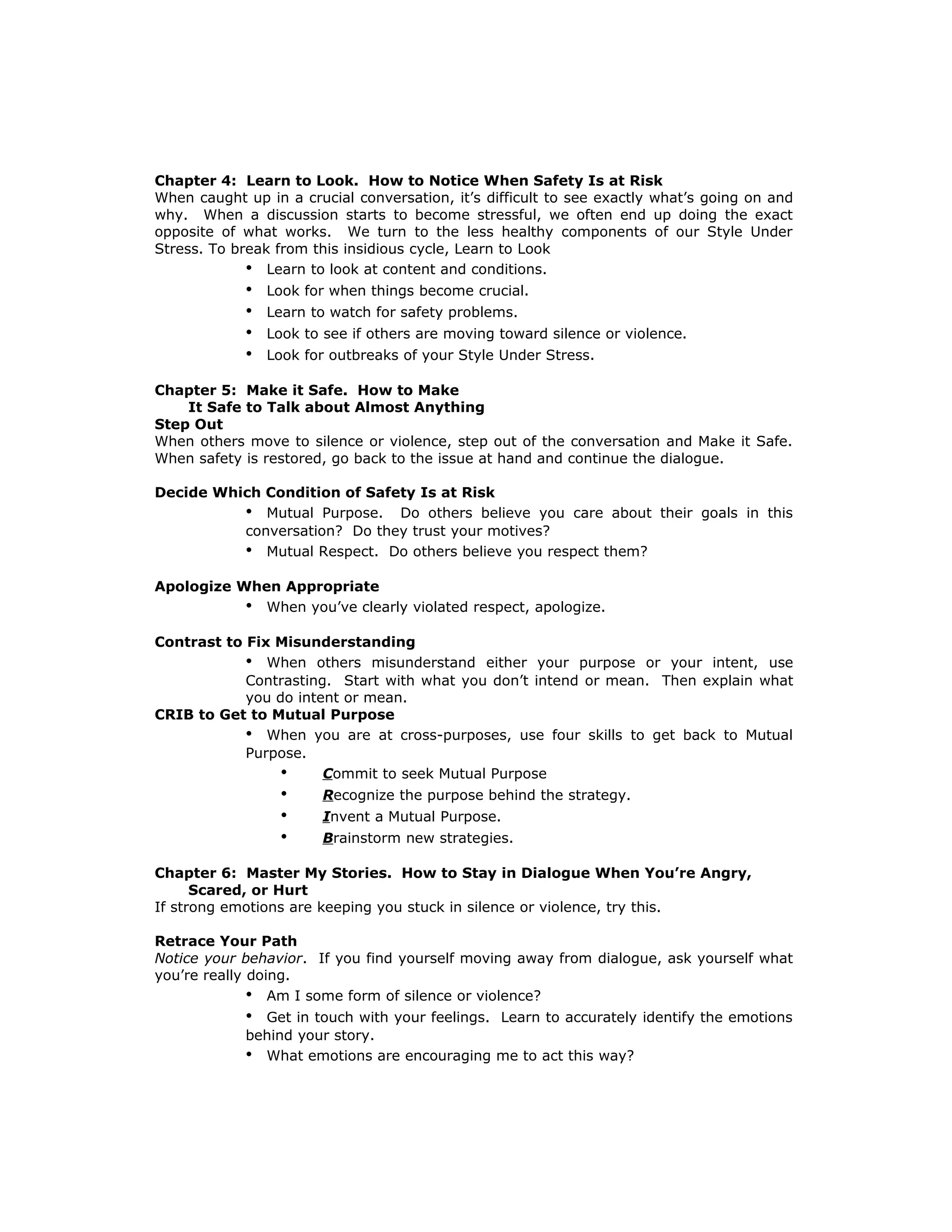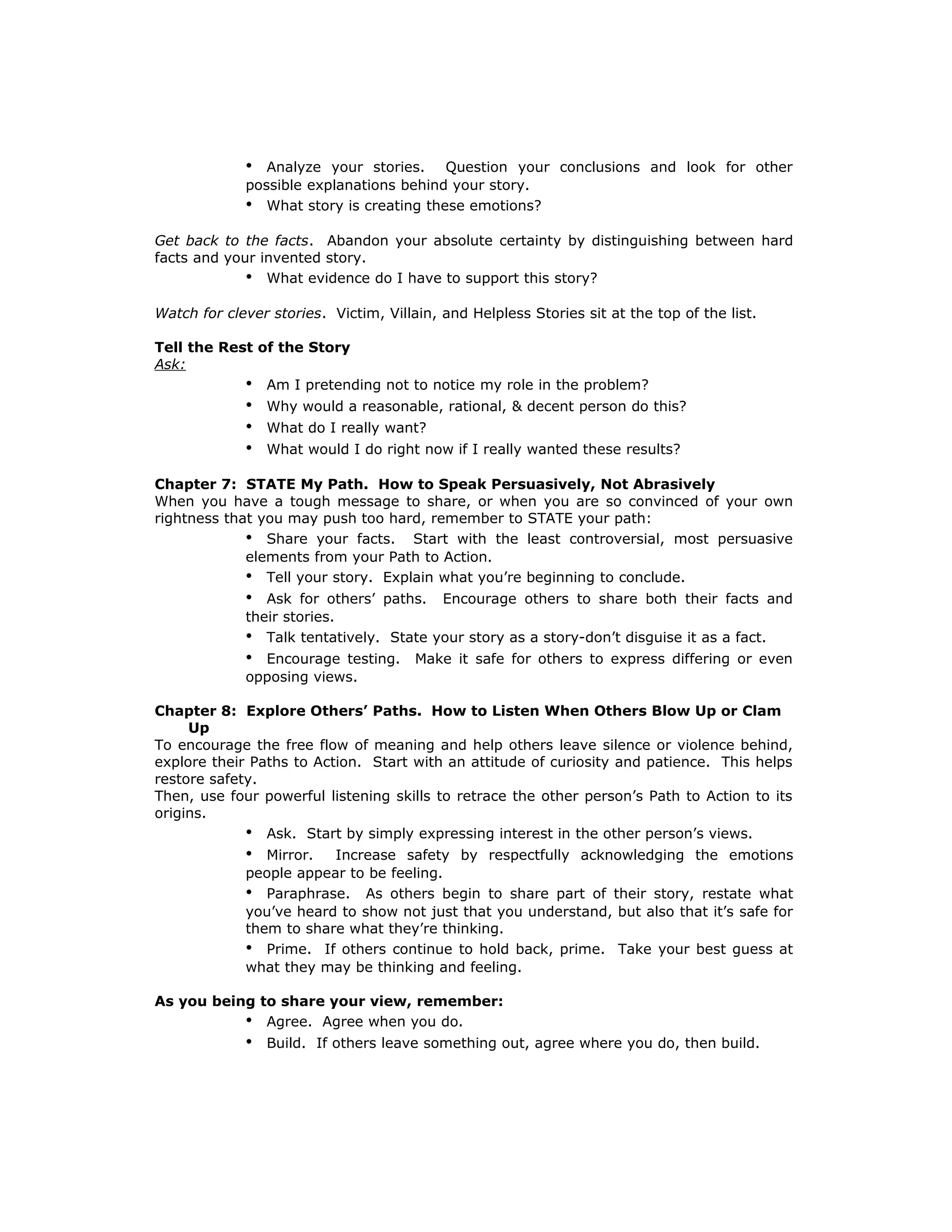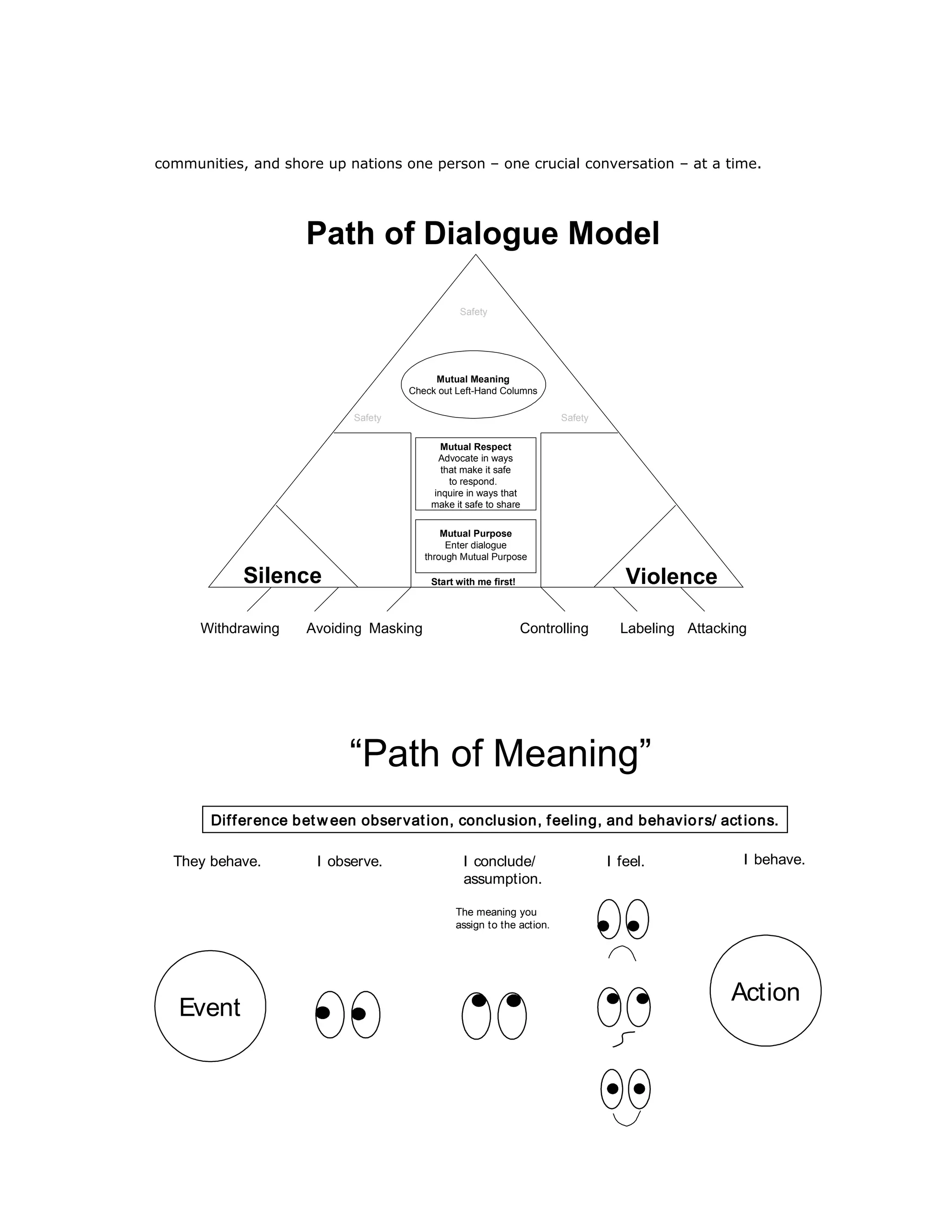The document summarizes a book about crucial conversations - high-stakes discussions where opinions vary and emotions run strong. Chapter 1 defines crucial conversations and explains their importance. Chapter 2 previews tools for preparing, talking, listening and acting together during crucial conversations. Chapter 3 discusses focusing on mutual goals and clarifying personal motives. The book provides skills and models for identifying risks, restoring safety, sharing perspectives respectfully and reaching agreements to solve problems through crucial conversations.





